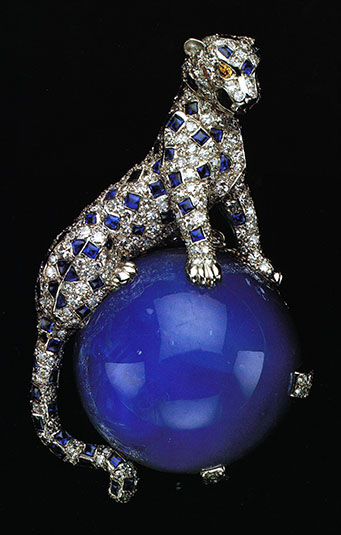
Wallis, the Duchess of Windsor (1896-1986), is remembered for her stylishness. She filled her empty life by buying expensive clothes from the big Paris fashion houses like Chanel and getting the Duke to buy her costly jewels from Cartier. The Duchess of Windsor was always immaculately dressed and never casual. In 1935, she made the Paris Couture best-dressed list and remained there for 40 years.
In my previous post, “Coco Chanel, Nazi Lovers, and the Windsor Set,” I described the wave of attention the Duke and Duchess of Windsor received when they settled in Paris in the late thirties. A glamorous social set of fashion designers, Nazi sympathizers, American heiresses, British ex-pats, and assorted other idle rich people welcomed the Windsors and became a sort of parallel court for the displaced royals. This French upper-crust group was dubbed “the Windsor Set.” The press buzzed about them like bees around a hive. All their comings and goings, designer clothes, fancy homes, and elegant soirees were endlessly photographed and reported in the society columns of the day.

The Duchess and Duke of Windsor at home
At the center of this new social whirl was the Duchess of Windsor. She had never gotten over being snubbed by the British Royal Family and being barred from getting the attention she felt she and the Duke deserved.
Wallis had always been obsessed with her appearance. She knew she wasn’t a great beauty, having once said,
” Nobody ever called me beautiful, or even pretty.”
What she lacked in looks, she made up for in other ways. She selected simple, well-tailored clothes that accented her slim, almost boyish figure. Against this plain backdrop, she dripped with sometimes enormous jewels, sometimes mixing real gems with costume pieces, the real things being given to her by the Duke. Her taste ran to big colorful stones and yellow gold. She amassed a huge collection of jewelry which was sold at auction in 1987 for a record-shattering $50 million. “An 18-karat-gold cigarette case from Cartier—engraved with a map of Europe and set with 37 gems to mark the couple’s premarital holidays—sold for more than $290,000; Elizabeth Taylor phoned in a bid of $623,000 and snagged a diamond brooch.”

In 1949, the Duchess of Windsor acquired this diamond and sapphire panther pin from Cartier. The panther is crouched in a life like pose on a large perfect round cabochon star sapphire weighing 152.35 carats. This panther pin was one of the Duchess' favorite pieces which she frequently wore. It created an envy among other jewelry collectors and a demand for Cartier to produce more panther pieces. Today, the panther is a Cartier icon. The Duchess of Windsor's animal pieces became her signature.

Wallis and Edward with best man Edward "Fruity" Metcalfe at their royal wedding, June 3, 1937, at the Chateau de Candé, Mont, France
Necklaces, bracelets, lapel pins – she had them all. The only gap in her jewelry collection was rings. The Duchess hated her hands. She thought they were big and ugly. (Notice the black gloves in the first photo above). Acclaimed British photographer Cecil Beaton photographed the Windsors many times. He took their wedding photos at the Chateau de Candé. Beaton remembered of that session that Wallis
“twisted and twirled her rugged hands. She laughed a square laugh, protruded her lower lip. Her eyes were excessively bright, slightly froglike, also wistful.”




















